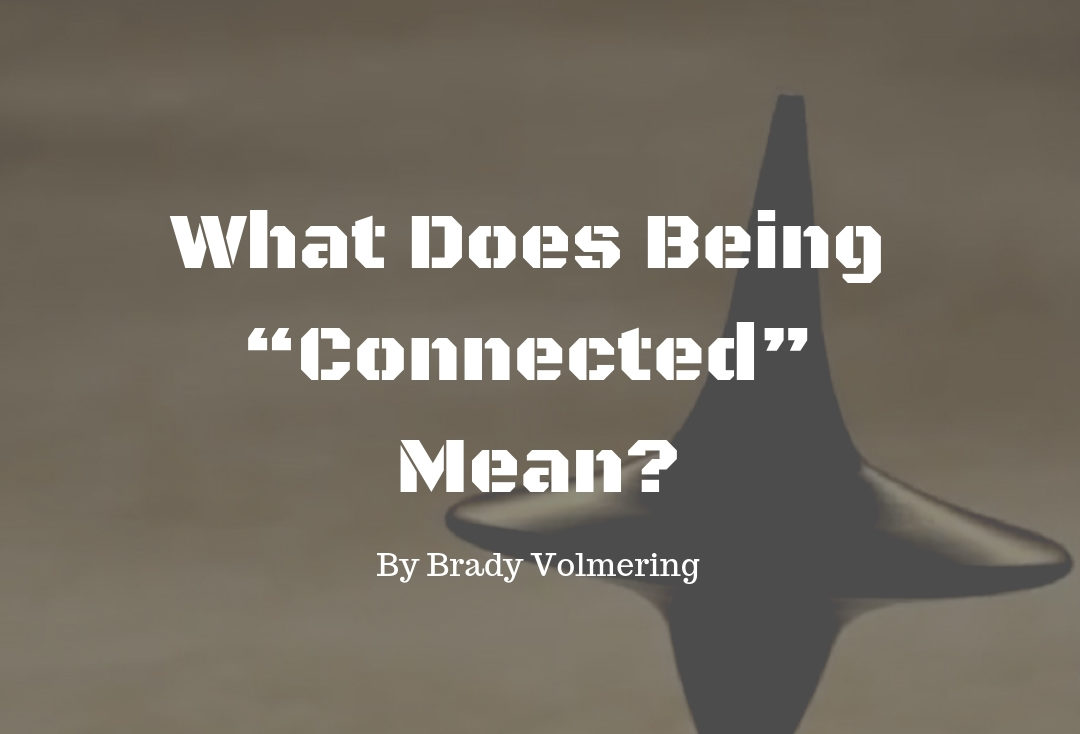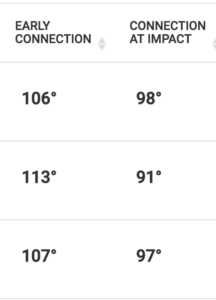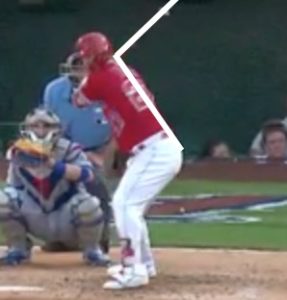The word “connected” gets thrown around quite a bit in hitting circles.
“This guy needs to be more connected”.
“See, look at how connected he is”.
The problem is, very few people actually know what “being connected” means. What should we look for? How do we tell if we are connected?
Enter: Blast Motion
Roughly a week ago I received my first Blast Motion sensor. And I gotta say, it’s been a lot of fun. Being able to put actual measurements and objective numbers on different aspects of the baseball swing is going to help us take a huge step forward. It’s truly going to revolutionize the way we coach the game. In many ways, it already has. But I digress.
One of the things Blast Motion allows you to do is get a “connection score” at various points in your swing. Specifically, it allows you to see how “connected” you are at swing initiation and at contact.
(early connection and connection at impact scores via Blast Connect)
But What Does Connection Actually Mean?
Blast defines perfect connection as having a 90 degree angle between your bat and spine. A visual:
Trout at “early connection’. The angle here is probably a bit greater than 90 degrees.
Trouts “connection at impact”.
Theoretically, the better you are able to make these connection points match up, the quicker you’re going to be able to rotate. Think about a top spinning:
(Spinning top apparently from the movie Inception)
Think about the up and down (vertical) piece of the top as the spine and the side to side (horizontal) piece of the top as the bat. There’s a reason they make the angle between those two 90 degrees. It allows for the smoothest, most efficient rotation. If they were to make the angles offset, for example 130 on one side and 50 on the other, would it still rotate as efficiently?
Application
What does this mean for you? Check out your own angles. Do you initiate rotation at 90 degrees? When you make contact is the angle between your spine and the bat 90 degrees? If not, how far off is it?
The closer we can get to these ideal angles, the better off we will probably be. Now, there are other aspects that come into play. If you’ve been playing baseball for 15 years, rotating with angles of 100 and 80 your whole life, you’ve likely adapted to those numbers. Moving you to 90/90 may not actually be the best thing for you, as 100 and 80 is still pretty close and we don’t want to risk messing up your whole hitting process just to get a little bit closer to the “ideal” ranges. However if you are way off, then we know it is probably an issue causing problems for you and is something that should be addressed.
In reality, you will NEVER be 90/90 on all swings. Hitting is much too complicated for that to happen. Instead, we should be aiming to be within a “normal” range on each swing, which gives us some room to work to adjust and adapt to different circumstances on each swing.
To finish up, here’s a drill I’ve been messing with to feel early connection as that seems to be a pretty inconsistent aspect for me personally:
Have questions or comments? Interested in getting remote training from DAC? I can be reached via email at brady@dacbaseball.com.



